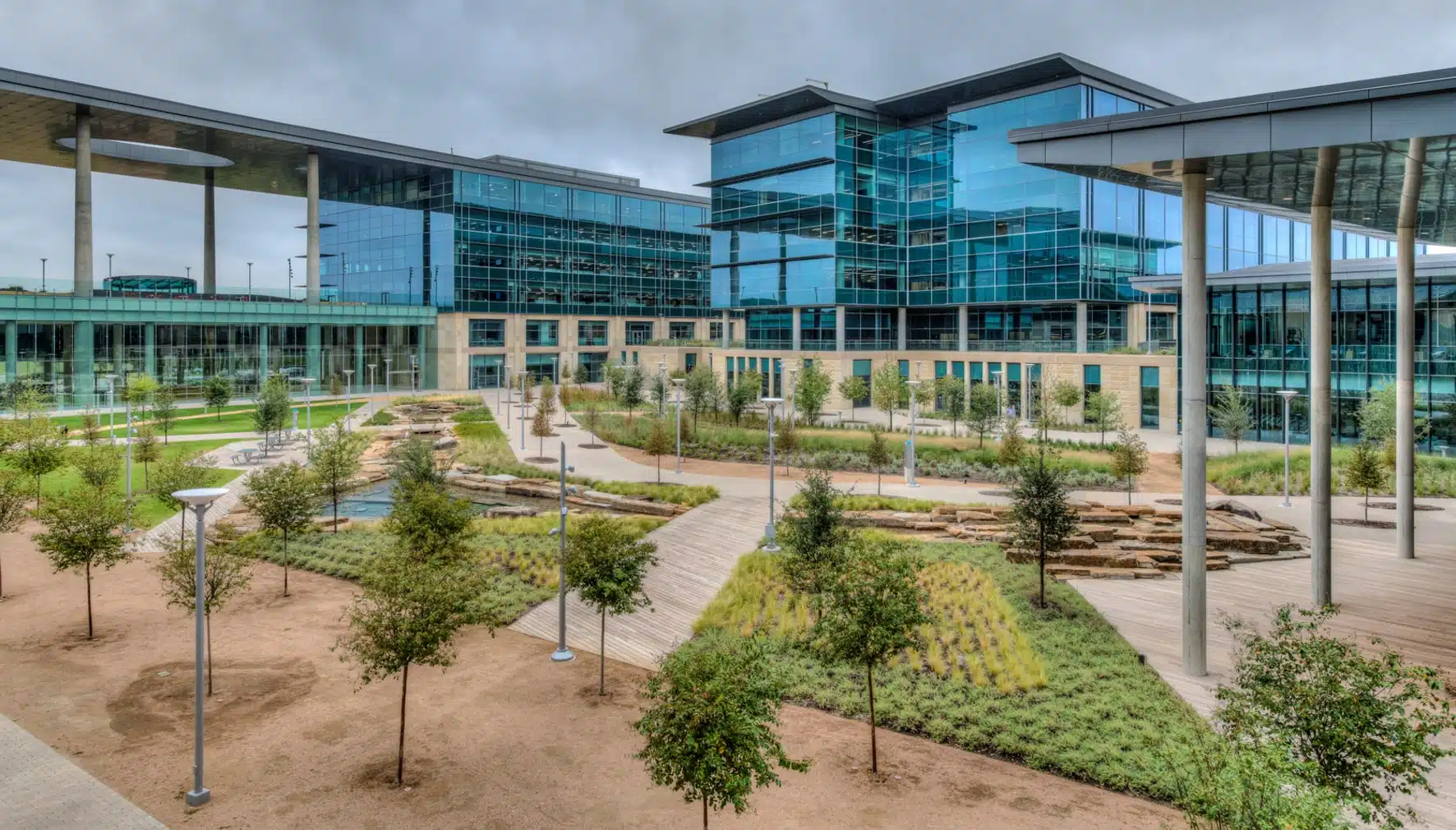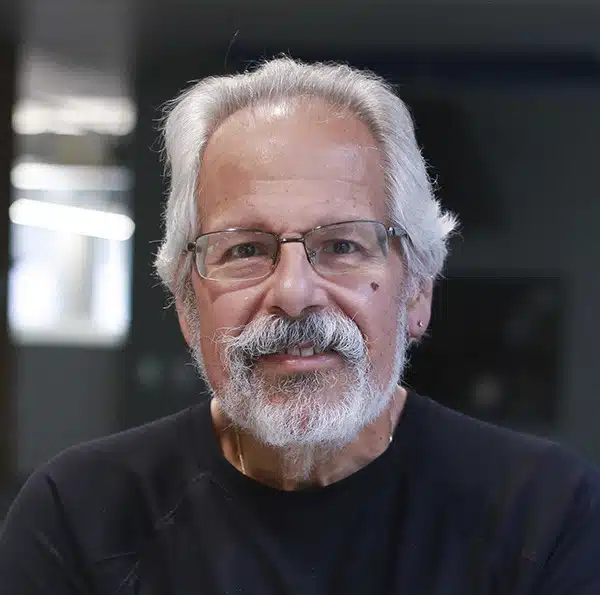- April 21, 2025
- Perspectives
LEED v5: Ushering in a New Era of Sustainable Building


Dennis Berlien, PE, LEED AP BD+C, DBIA
National MEP Lead

Al LaPera, LEED AP BD+C, LEED AP O+M, CxA, EMP
Energy Services Manager
The US Green Building Council (USGBC) has approved LEED v5, the latest version of the Leadership in Energy and Environmental Design (LEED) certification. A comprehensive framework for sustainable and efficient building practices for Building Design and Construction (BD+C), Interior Design and Construction (ID+C), and Operations and Maintenance (O+M), the LEED certification is the most used green building rating system globally. LEED v5 is for BD+C and O+M, and while both are part of the same sustainability framework, each serves a different purpose in a building’s lifecycle.
With LEED v5, the USGBC marks a transformative milestone in promoting sustainability and resilience in the built environment. The new version brings an emphasis on decarbonization, climate resilience, and human health more directly than ever before. Read on to learn more about how it’s poised to pave the way for a lower-carbon future.
What’s New: Central Areas of Impact of LEED v5
LEED v5 focuses on both new construction and existing buildings, offering each a clear but different roadmap for obtaining a LEED certification through actionable strategies. This will help project teams benchmark against industry standards, prepare for legislative mandates, and anticipate climate risks, ultimately guiding buildings toward optimized performance and sustainable practices. To better understand it, let’s illustrate the primary differences between each one.
LEED v5 BD+C: Start by Building It Right
LEED v5 BD+C was designed for new buildings or major renovations. The rating system guides the project during the design and construction phases to ensure sustainable decisions are made early in the process. BD+C incorporates core principles of:
- Scaling transformative change
- Decarbonization
- Resilience
- Human health and well-being
- Ecosystems
These core principles guide a holistic approach to sustainability, creating buildings that are not only environmentally friendly but also people friendly. Its key areas of focus are:
- Carbon-focused design, including operational and embodied carbon reduction
- Integration of resilience strategies into building design
- Use of low-impact materials
- Early decisions that shape long-term energy and water efficiency
- Health and wellness considered during planning
LEED v5 O+M: Running Buildings Efficiently and Responsibly
LEED v5 O+M targets existing buildings that are operational for at least 12 months. This rating system focuses on how to optimize a building on a day-to-day basis, ensuring persistence of savings and helping maintain high-performance standards. O+M incorporates the same core principles as BD+C, with key areas of focus such as:
- Operational carbon and energy use
- Water conservation and waste management
- Indoor air quality and occupant satisfaction
- Continuous monitoring and performance improvement
- Sustainable purchasing and maintenance policies
The following provides further insight into understanding the key LEED v5 tenons.
1. Decarbonization
This area of impact in LEED v5 targets significant sources of carbon emissions in buildings, including:
- Operational carbon from energy and refrigerants used to operate buildings
- Embodied carbon from materials used in construction, renovation, and operation, including waste streams
For O+M projects with future decarbonization goals, targeting carbon emissions sources can be incentivized through rewarding existing buildings leading the way in this area. For BD+C projects, decarbonization impact goals can be actualized by following clear guidelines for delivering new buildings with ultra-low greenhouse gas emissions.
2. Quality of Life
This central impact area facilitates the improvement of health, well-being, and resilience for building occupants and their communities, helping create spaces that are both environmentally and people friendly. For O+M projects, this can be achieved through performing ongoing assessment and verification of indoor air quality, and as needed, address air quality management modes for infection risk, wildfires, and other extreme conditions. BD+C projects should be developed to ensure buildings are evaluated and prepared for changing climates and associated risks, thereby promoting resilience in design while providing exceptional indoor environmental quality for occupants.
3. Ecological Conservation and Restoration
The strategies outlined in this area of impact seek to minimize environmental degradation and support ecosystem recovery, with a goal of promoting a built environment that coexists harmoniously with nature. To adjust O+M projects for ecological conservation and restoration, prioritize utilizing environmentally-conscious purchasing practices and materials used to reduce waste. For BD+C projects, consider critical ecosystem services in the site selection and design process by taking actions such as prioritizing the preservation of native vegetation and choosing recycled materials.
At Kimley-Horn, we are eager to implement these pioneering standards, thereby continuing our commitment to exceptional client service and elevating expectations. Together, let’s build a healthier, more sustainable future.
About the Experts

Dennis Berlien, PE, LEED AP BD+C, DBIA
A sustainability-focused electrical engineer, Dennis brings over 25 years of experience driving growth and expansion in the engineering sector through organic initiatives and strategic acquisitions. His leadership has been instrumental in multibillion-dollar projects across diverse markets, including healthcare, data centers, advanced manufacturing, hospitality, and institutional, with a consistent emphasis on integrating sustainable design principles. From small firms to large-scale, multidiscipline engineering and architectural organizations exceeding $100 million in revenue, Dennis has a proven track record of delivering projects that prioritize environmental responsibility alongside economic growth.

Al LaPera, LEED AP BD+C, LEED AP O+M, CxA, EMP
Al has more than 45 years of experience working on a broad range of building types, including municipal, educational, healthcare, and commercial facilities. Through the lens of sustainability consulting, Al's specialties are energy services such as systems commissioning, energy analysis, energy auditing, and HVAC system design. He sits on the Board of Directors for the Energy Management Association and serves on the ACG (AABC Commissioning Group) Education Committee.
